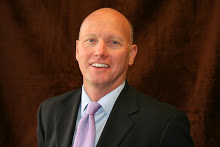NEUROMUSCULAR DENTISTRY’S APPROACH IN TREATING
TMJ RELATED PROBLEMS
Do you get headaches on a consistent basis? Do you blame it on stress? You are not alone. Using a neuromuscular approach to treating patients can help the many headache sufferers. But what exactly is it?
Neuromuscular dentistry is nothing new. Actually, it has been around some 30 years, but is not the traditional approach to patient care in dentistry. It refers to the muscles of the head and neck, the nerves related to them, and how they all work together. The symptoms of neuromuscular disharmony are related to the TJM or temporamandibular joint. Many patients complain that the jaw pops and clicks. They often complain of pain around the neck and back. If you have these symptoms, then you are not alone.
In reality however, 99% of people do not have true “TMJ” problems. Unless trauma or injury is involved, pain from the joint comes from the surrounding muscles. If you treat the muscles and get them “relaxed”, then the majority of symptoms will resolve. But what are the symptoms? As you read them, think of how they apply to you.
SYMPTOMS
The symptoms most commonly cited are as follows:
• Headaches or migraines
• Snoring
• Insomnia – difficulty sleeping
• Vertigo (dizziness)
• Sinus problems/ or sinus like symptoms
• Stiffness or soreness in the neck, shoulders and back
• Ear pain, diminished hearing
• Back, neck, cervical pain
• Visual disturbances
• Clenching or grinding your teeth
• Sensitive teeth
• Pain or pressure in and about the eyes
• Swelling on the side of the face and/ or mouth
• The jaw locking open or closed/ or pain around the jaw.
• Postural problems (forward head postures)
These are just a few of the symptoms that may be related to neuromuscular disharmony. Make no mistake headaches are not just from stress. Neck and shoulder problems are not just from sitting at a computer for many hours. Sinus problems are not just from allergies. But how does all of this relate to your teeth?
If you have ever seen a person with no teeth in their mouth it almost appears as if their chin can touch their nose. That is because their teeth are not present to create a vertical stop as to how far they can close at the correct position. As you use your teeth they wear and shorten, causing you to be over-closed when your teeth are in contact. Now, here is where the muscles come into play. At complete rest, your teeth are separated by a certain amount. Dentists call this freeway space. When it is time for your teeth to be put to use for eating or speaking, the muscles contract. Now imagine that you have worn or shortened teeth. Your freeway space is larger than ideal and the muscles have to work to get the teeth to make contact. The muscles do not compensate by STAYING perpetually contracted, causing pain and soreness. After a while they get fatigued, producing acid (which is what causes the spasms and discomfort.) Thus destroying more muscles and reducing blood flow.
Using a neuromuscular approach to treating patients can help the many headache sufferers. Clinic research and clinical experience have shown this technique effective in treating patients with various levels of head and neck pain. It is also used in finding the optimal jaw position before restorative dentistry and greatly increases the longevity of restorations and natural dentition. The cause of these signs and symptoms are structural, biochemical and emotional. Structural problems are almost always present and these lead to over activation of the jaw, head and neck muscles. Over the period of time it can lead to pain, tension and spasm.
But what exactly is neuromuscular dentistry? Neuromuscular dentistry is the art and science of using the relaxed position of the muscles of the head and neck to place the jaw into an optimal physiologic position. Neuromuscular dentistry is nothing new. What is new is computer imaging to locate, isolate, and resolve the problem.
The neuromuscular treatment approach in dealing with TMJ problems will increase the much needed blood flow and oxygen into the fatigued muscle reversing the damage done over the years. Over time during the treatment, facial tones are RESTORED back to younger days.
DOUGLAS HAUCK D.D.S.
Thursday, May 13, 2010
Subscribe to:
Post Comments (Atom)

No comments:
Post a Comment